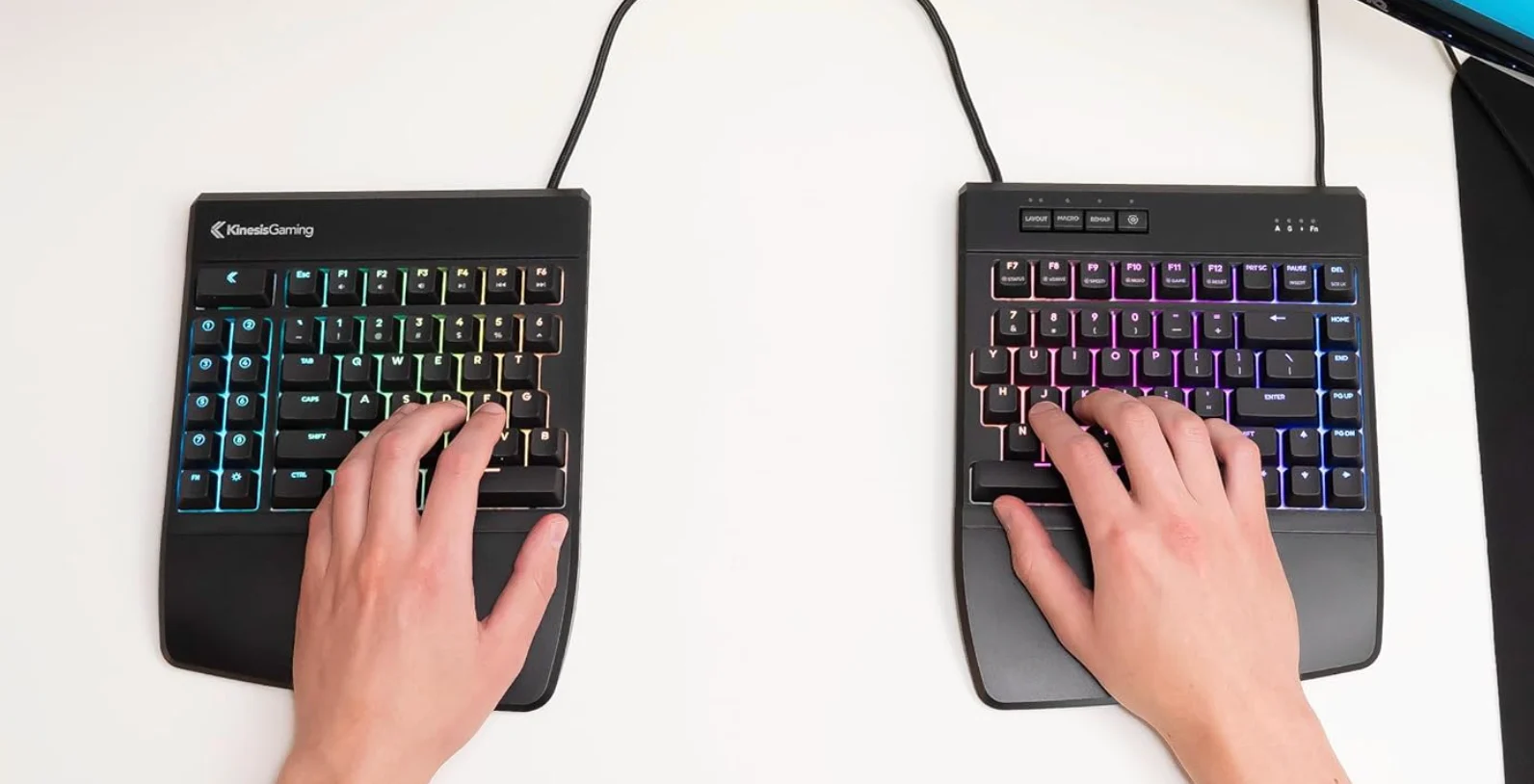Consumers Best Verdict: Kinesis Highlights
In 2025, Kinesis still sets the tone for split-mech ergonomics. The Freestyle Edge strikes a sweet balance: comfort-first geometry, mechanical switch options, and driverless SmartSet programming that works across Windows, macOS, and Linux. Build quality feels premium, travel-friendly enough (with a caveat), and the learning curve is real but short. If you’ve been eyeballing a true split board that doesn’t feel like a science project, this is the one I keep recommending to friends who type and game.
Look, if your wrists are whispering for help and your WPM actually matters, the kinesis freestyle edge ergonomic keyboard just… lands. The two-piece split layout lets your shoulders relax, the optional tenting kicks wrist strain to the curb, and the onboard macros are gamer-grade without the bloatware. It’s not the cheapest board on the block, but after a week with Kinesis, I stopped thinking about price and started noticing I wasn’t rubbing my forearms at 3 p.m. That’s the win.
In-Depth Look: Kinesis Features & Considerations
Core Features & Consumer Benefits
The kinesis freestyle edge ergonomic keyboard is a two-piece, mechanical, split design that puts alignment and adjustability ahead of flashy gimmicks—though if you want per-key RGB, that’s there too.
True split layout with generous separation
Set each half where your shoulders naturally sit to reduce ulnar deviation and neck hunching—comfort you actually feel by day three.
Optional tenting (Lift Kit)
Angle each half up to alleviate pronation; it’s a small tweak that delivers big relief during marathon sessions.
Mechanical switch options
Choose tactile, linear, or quieter switches so the board matches your feel and your space—office-friendly or click-happy, your call.
SmartSet onboard programming
Create macros and remaps without installing software; perfect for locked-down work machines or multi-OS setups.
Ergo-first geometry, palm supports, and low reach
Less strain on wrists and shoulders, more stability for precise typing and in-game control.
Important Considerations & Potential Downsides
- Tenting and some accessories cost extra
The best comfort often comes with the Lift Kit, which raises the overall price.
- Learning curve
A split layout takes a few days to feel natural—expect some early typos and micro-adjustments.
- Wired only
If you’re chasing a clean, wireless desk, this isn’t your board.
- No built-in numpad
Number-heavy work may require a separate pad or a different layout.

Who Is the Kinesis Best For?
Ergonomic-first typists
You want a split, tentable board to ease wrist/shoulder strain without ditching mechanical feel.
PC gamers who love macros
Onboard, driverless macros and remapping for combos, rotations, and workflow tweaks.
Developers and writers
Long sessions, consistent comfort, and fewer posture compromises—day in, day out.
Multi-OS and IT pros
Works across Windows, macOS, and Linux with on-device profiles—no admin permissions needed.
Power users who tinker
Layers, profiles, and switch choices to dial in exactly how you work and play.
Who Might Want to Explore Other Options?
- Budget-minded shoppers
If you’re just testing the ergonomic waters, a lower-cost split or membrane ergo might be safer to start.
- Wireless minimalists
If cables are a deal-breaker, consider a Bluetooth or 2.4 GHz ergonomic board.
- Heavy number crunchers
Prefer a fixed full-size with a dedicated numpad built in, or plan to add a separate pad.
- Frequent travelers
Two pieces plus a link cable aren’t as grab-and-go as a compact 60% board.







